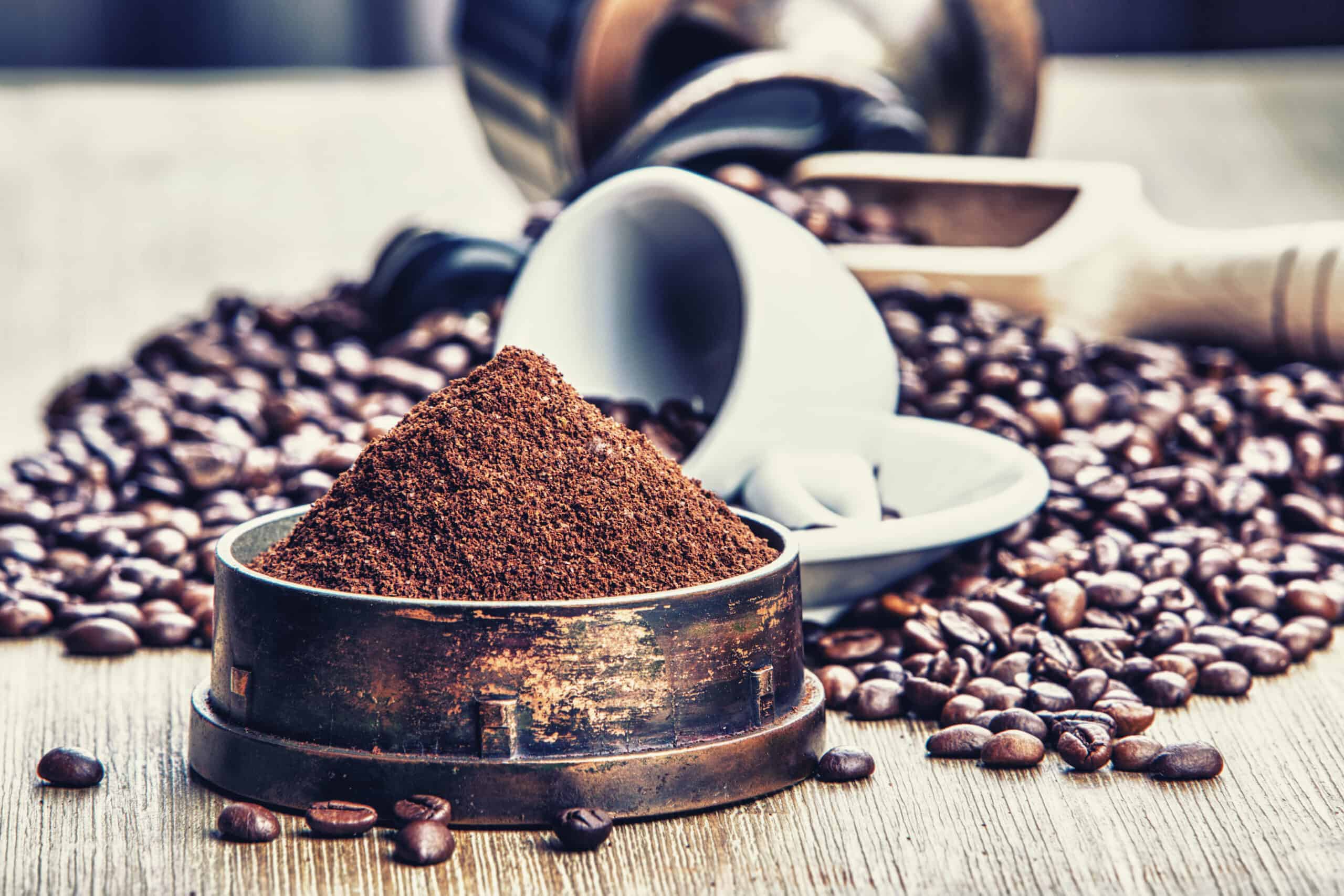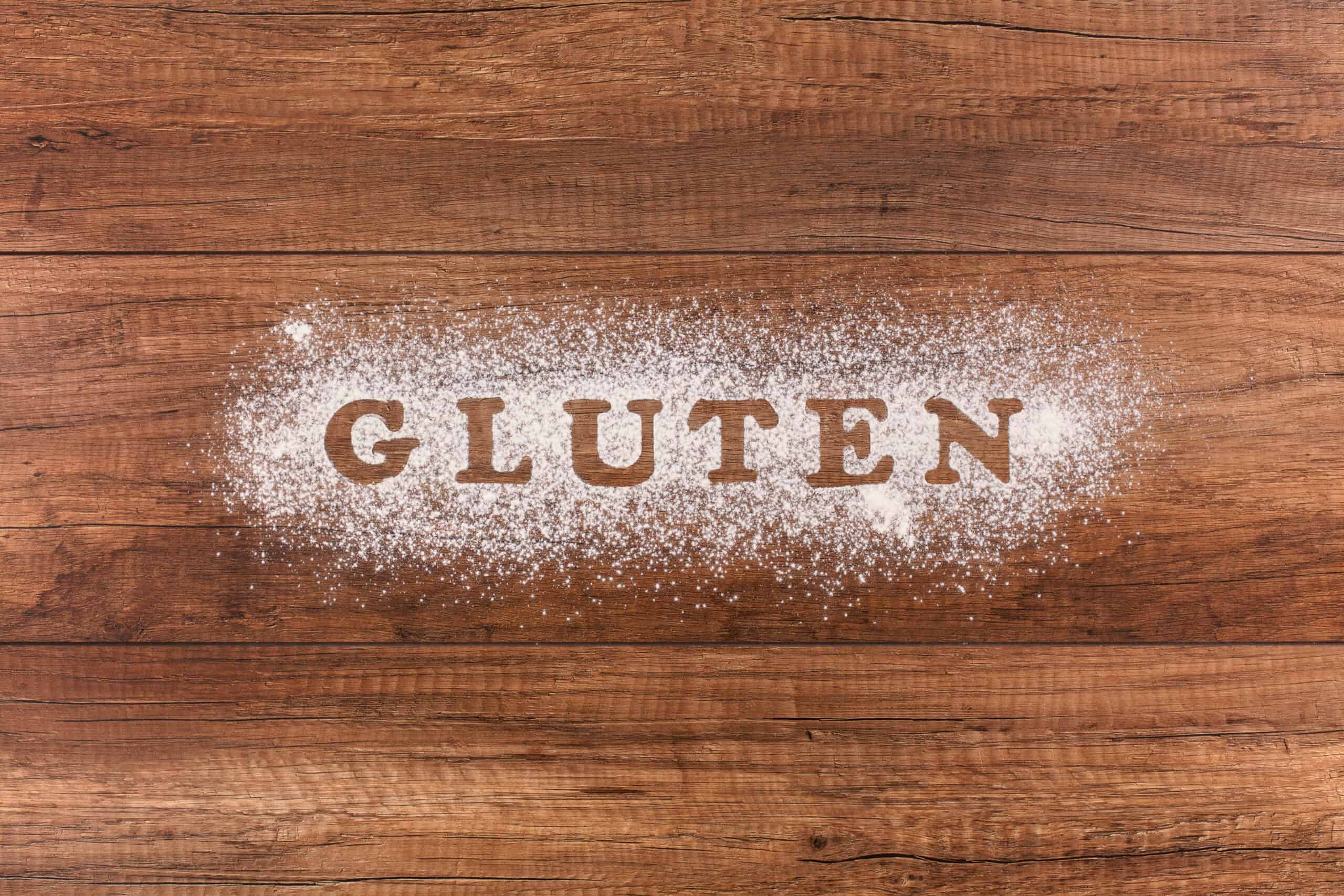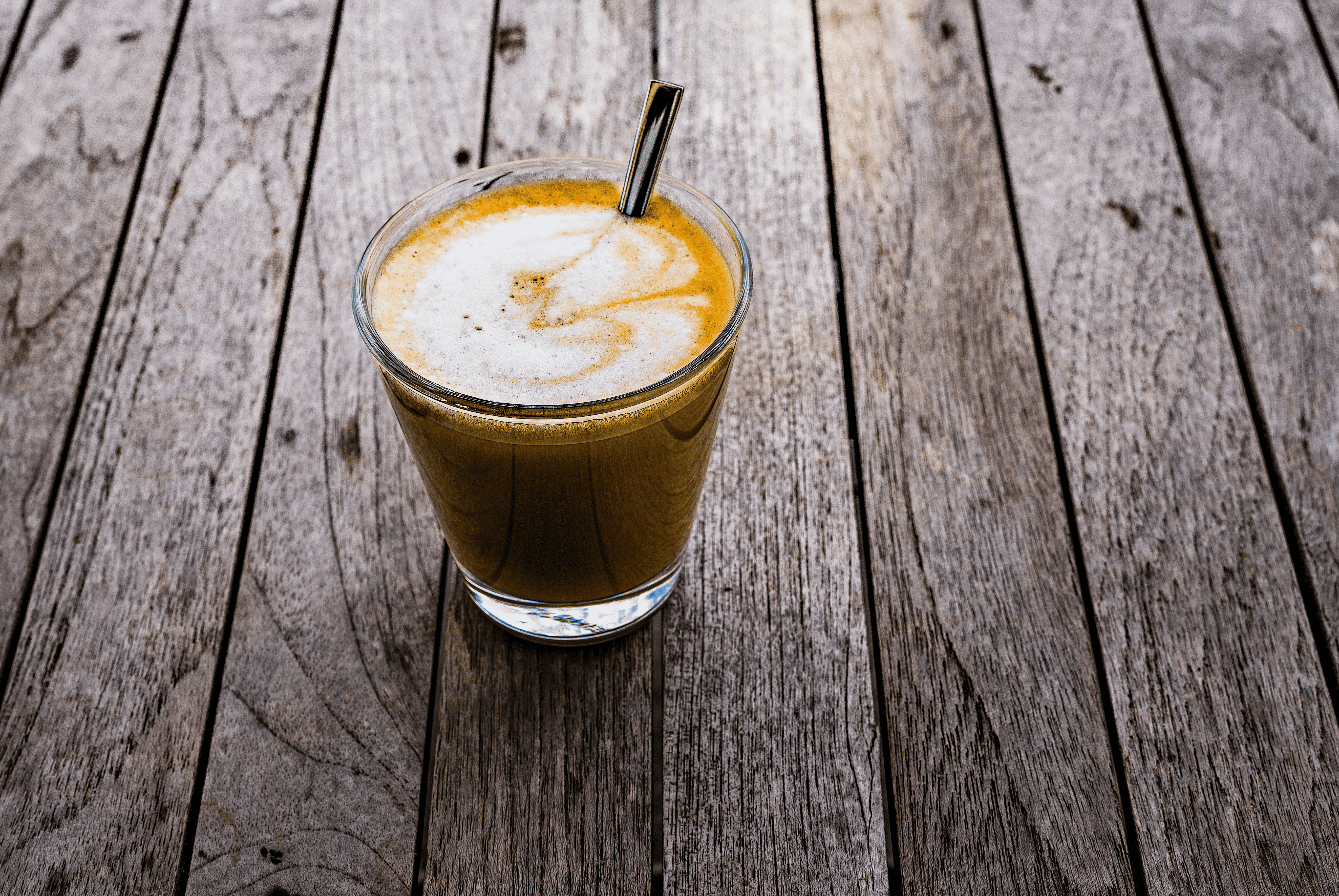If you’re anything like me, those first sips of your morning coffee are treasured. Those delicious, hot, and caffeinated sips allow me to get up and start whatever the day may bring. While much of the population buy pre-ground coffee grains, about 20% of individuals take the extra effort to grind their own beans. And boy, is it worth it!
To properly grind coffee beans, you first need a good burr coffee grinder that grinds the beans uniform in size. The brewing method will determine how coarse or fine you grind the beans. It’s best to grind the beans right before using to preserve freshness.
Before you go out and buy any ol’ burr coffee grinder, continue reading to ensure you get one that fits your desires. Plus, learn how coarse or fine your grounds need to be when using your preferred brewing method.
Why do We Grind Coffee Beans?
To begin with, let’s talk about we grind whole coffee beans in the first place. If you were to just pour hot water over whole coffee beans, you might get some flavor out of them but nothing near what you would desire. The water only comes in contact with the outside of the bean and is simply not able to get into it.
This is why we grind coffee beans. Grinding your beans is one of the easiest ways to get a superior cup of coffee.
When coffee beans are ground, it exposes more surface area of the bean, so the water can then pull the flavor out of the ground beans and create that amazing flavor. This is called extraction.
The moment the beans are grounded, they begin to lose their freshness. So grinding them right before use will ensure you have a fresher and more flavorful cup of coffee.
What is Grind Uniformity?
Grind uniformity is essential when grinding your beans. This means that all the coffee grounds are as close to the same size as possible. When you go to brew your uniform coffee grounds, they will then brew the same way and give a more uniform taste.
If you were to brew with grounds that are not uniform in size, the finer ground beans would produce more flavor while the more coarse grounds would produce less flavor. Thus, creating an unbalanced flavored coffee.
Burr Grinder versus Blade Grinder
As we mentioned earlier, it is extremely important to use a burr grinder over a blade grinder. A blade grinder is the least expensive coffee grinder. It comes with a small motor and blades that spin, like a propeller, to smash the coffee beans. The longer you run the blade grinder, the finer the grind.
While blade grinders get the job done, they lack uniformity in the grind they produce. They also lack precision and don’t give you much control over how coarse or fine you grind. One final thing to note about the blade grinder is that the spinning blades produce heat that can affect the overall taste.
Unfortunately, in the end, blade grinders produce a lower-quality and less consistent cup of coffee.
On the other hand, a burr grinder funnels the beans between a rotating grinding wheel and a stable surface that grind them. Rather than chopping the beans, the burr grinder works to crush them, producing very little heat.
Burr grinders also produce a more consistent and controlled size of coffee grounds. These grinders typically come equipped with various settings that allow you to better control your desired grind size.
There are two types of burr grinders, flat and conical. The flat burr grinder is typically used more often for commercial use, while the conical burr grinders are generally for personal use. The table below shows and describes the pros and cons of each.
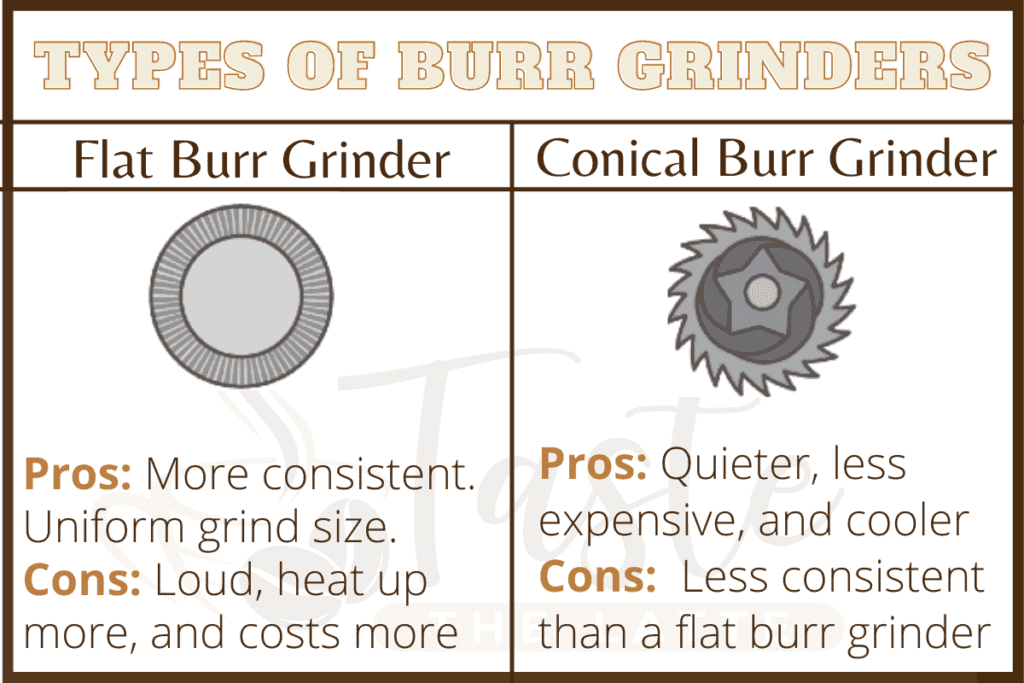
Guidelines to Follow When Grinding Coffee Beans
- Always GRIND your coffee beans: I know it’s easier to purchase pre-ground beans at the store, but grinding your coffee is worth the extra effort. Remember the sooner you use the beans after being ground, the fresher and more flavorful your coffee will be.
- Use a Burr Grinder: There are many different burr grinders out there. Later, we’ll discuss the different kinds and share our recommendations.
- Measure out the beans before you grind. For more information, check out our other article, “Do you Weight Coffee Beans Before or After you Grind Them?”
- Know what grind setting is needed for the brewing device you are using: We’ll go into more detail in the next section.
Know Your Grind Settings
The three main grind settings on a coffee grinder are coarse, medium, and fine. If you get a more sophisticated grinder, you may have more options than the typical three. For example, your coffee grinder might have extra coarse, medium coarse, medium-fine, and extra-fine in addition to coarse, medium, and fine.
Using the correct grind size for your specific brewing method is crucial if you want a perfect cup of coffee. If your grind size is too fine for what you’re using it can lead to your coffee tasting bitter or burnt. If you grind size is too coarse, your coffee can have a sour or soapy taste to it.
When do you Use a Coarse Grind?
You would set your grinder to coarse if you are brewing with an immersion brewing method, like a French Press coffee maker. You want the size to be about the size of sea salt.
When do You Use a Medium Grind?
A medium-coarse grind should be used if you are using a Chemex and it should be about the size of rough sand.
A medium grind should be used for pour-overs and drip coffee makers and should resemble the size of regulate sand.
Lastly, a medium-fine grind should be used or an AeroPress or V60. The grind size should look similar in size to table salt.
When do You Use a Fine Grind?
Finally, a fine grind should be used when using a Moka Pot and Espresso machine.
Below is a table showing all the possible grind settings that your coffee grinder may have, along with what the grind size is similar to and what brewing device uses the grind size.
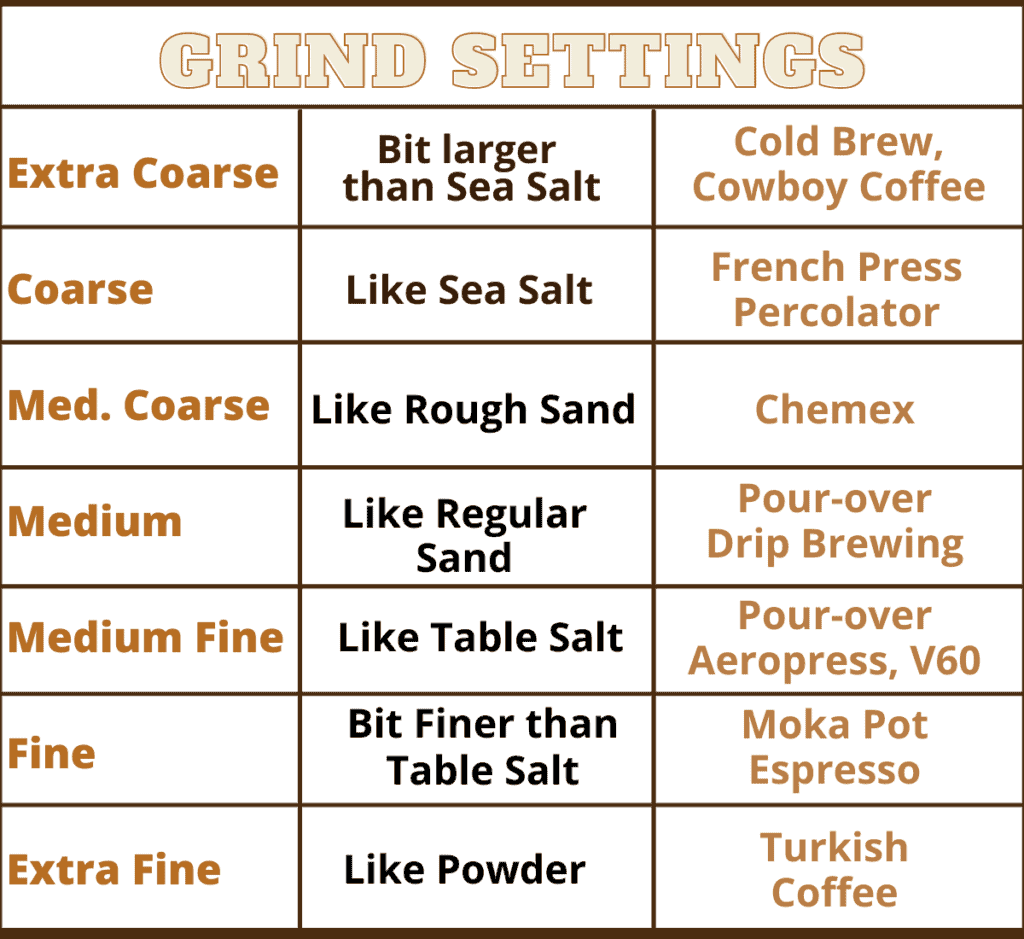
To read more on how fine should you grind your coffee beans, click here!
What if You Don’t Have a Coffee Grinder?
If you have a bag of whole bean coffee and no coffee grinder, you do have some options available to you, but they aren’t going to be as good as a grinder.
- Blender (like a magic bullet, click the link to read more)
- Pestle and Mortar
- Plastic bag (preferably a freezer bag) and a rolling pin
Our Recommendations for Burr Coffee Grinders
Most burr coffee grinders work the same way, so we narrowed down the ones we suggest for use based on usability, cleanliness, and consistency. Some of the grinders we tried simply were not user-friendly, and no one wants to be messing around with a difficult grinder early in the morning.
Our top pick for burr coffee grinders is the Baratza Encore Conical Grinder. This one is a bit more expensive than the other two we will recommend, but we believe the extra cost is worth it. The Baratza Encore will give you a consistent grind every time and is built to last. It is straightforward to use with 40 grind settings to choose from, so you’re always going to find that perfect grind size for whichever brewing device you are using.
Next, we have the Solic Scala Coffee Grinder. We recommend this particular grinder due to its price point. If you don’t want to spend too much, this great option offers excellent performance. This is great to use with a french press, pour-over, drip brewing, or even a cold brew. What I like about the Solis Scala Grinder is the built-in grind timer and its smaller size, so it doesn’t take up too much space on your kitchen counters.
Lastly, we have the OXO Brew Conical Burr Coffee Grinder. This grinder comes equipped with 15 grind settings and can hold up to twelve ounces (3/4 pound) of coffee beans. It also has a quiet grinder so that the noise won’t startle you in those early morning hours. The OXO Brew Conical Burr Grinder produces consistent grind size every time and is an excellent addition to any coffee lover.
Final Thoughts
When grinding coffee beans, you want to strive for uniformity in your grounds, whether that be coarse, medium, fine, or anything in between. The best way to accomplish this is to invest in a high-quality burr coffee grinder.
Once you’ve done this, determine the right grind settings for the brewing device your using, and you’re good to go. Keep in mind that you may want to experiment a little with the grind size you use. The table provided here is simply a starting point.
To read more, check out “What is the proper way to grind coffee beans?”
Is Coffee Gluten Free? Best Cup for Your Gut
Coffee, with its invigorating aroma and rich flavor, is a…
How to Make the Perfect Gibraltar Coffee
Gibraltar coffee is a delicious espresso-based drink that originated right…
